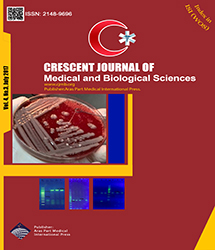
| Original Article | |
| Effect of an Increase in Nano-Filler Content on the Mechanical Properties of High-Leucite Composite Resins Useable in Dentistry | |
| Sirous Safaee1, Behzad Yasrebi1 | |
| 1Department of Biomedical Engineering, Tabriz Branch, Islamic Azad University, Tabriz, Iran | |
|
CJMB 2017; 4: 144–149 Viewed : 5256 times Downloaded : 4887 times. Keywords : Composite resin, High-leucite, Tensile strength, Flexural strength |
|
| Full Text(PDF) | Related Articles | |
| Abstract | |
Objective: Currently, a large number of studies are under way on the technologies used to prepare fillers and improve composite resins. The aim of the present study was to evaluate the physical properties of dental composite resins after incorporation of ceramic nano-fillers. Materials and Methods: In the present study, high-leucite nano-fillers were incorporated into dental composite resins (a mixture of Bis-GMA [70%] and TEGDMA [30%]) at different concentrations. Then the mechanical properties of the resultant composite resins, including tensile and flexural strengths, were evaluated. The tensile and flexural strengths of the samples were measured with the use of a universal testing machine. Data were analyzed with t test, using SPSS 20. Results: The results showed that the flexural strength in 10% nano-filler-reinforced composite resin group was significantly higher (56.05 ± 90.75 MPa) than that in the conventional composite resin group (51.4 ± 59.08 MPa) (P < 0.05). In addition, the tensile strength in the 10% nano-filler-reinforced composite resin group (48.3±43.03 MPa) was significantly higher than that in the conventional composite resin group (39.3 ± 27.83 MPa) (P < 0.05). Conclusion: Based on the results of the present study, in composite resins containing 10 wt% of nano-fillers, the tensile and flexural strengths increased significantly. |
Cite By, Google Scholar
Online Submission System
 CJMB ENDNOTE ® Style
CJMB ENDNOTE ® Style
 Tutorials
Tutorials
 Publication Charge
Medical and Biological Research Center
About Journal
Publication Charge
Medical and Biological Research Center
About Journal
Aras Part Medical International Press Editor-in-Chief
Arash Khaki
Deputy Editor
Zafer Akan


















